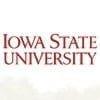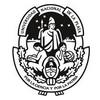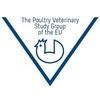Explore all the information on
Porcine circovirus diseases
Porcine circovirus diseases have traditionally been defined as those associated with porcine circovirus 2 (PCV-2) infection. However, this terminology should be revised because the advent of the novel porcine circovirus 3 (PCV-3) may expand the clinicopathologic outcome caused by porcine circovirus infections. Porcine circovirus 1 (PCV-1) is still considered a nonpathogenic agent for swine.
Historically, PCV-1 was described as a noncytopathogenic, picornavirus-like contaminant in the porcine kidney cell line PK-15 (ATCC-CCL33). This agent was later shown to be a small, nonenveloped virus containing a single-stranded, circular DNA genome; it was named porcine circovirus (PCV). PCV antibodies in swine were found to be widespread, and experimental infections with this virus in pigs did not result in clinical disease, suggesting that PCV was nonpathogenic.
PCV-2 has been further associated with a number of disease syndromes in pigs, so the term porcine circovirus disease (PCVD) was proposed as a collective name. The terms PCV2-systemic disease (PCV2-SD) and PCV2-reproductive disease (PCV2-RD) have been proposed to replace PMWS and PCV2-associated reproductive failure, respectively. Moreover, it is currently thought that the most important PCVD is the PCV2-subclinical infection (PCV2-SI), which is linked with growth retardation without overt clinical signs. Porcine dermatitis and nephropathy syndrome (PDNS) is also included as a PCVD, although there is still no proof that PCV2 is the antigen linked with this immunocomplex disease.
PCV-3 has been recently linked with reproductive disorders and multisystemic inflammation associated with vasculitis, as well as with PDNS. Like the other porcine circoviruses, PCV-3 is found worldwide.
Introduction: Vaccination against circovirus type 2 (PCV2) and Mycoplasma hyopneumoniae ( M.hyo ) is done round weaning, which is one of the most stressful events in the pig’s life. Therefore, vaccination should not contribute to compromised well-being to this new situation. Acute phase proteins (APPs) have been proposed as suitable biomarkers to monitor stress, for detection of inflammation and for monitoring the well-being of pigs. The aims of this study...
Comments : 0
Recommendations: 0
Introduction: Detection of Porcine Circovirus Type 2 (PCV2) in individual Placental Umbilical Cord Serum (PUCS) samples has been shown to be comparable to other sample types (e.g., colostrum, pre-suckle serum, fetal tissue) to monitor PCV2 sow herd stability. However, testing of individual samples is costly, and a frequently used method to reduce testing costs is sample pooling. The purpose of this study was to estimate the impact of PUCS sample pooling on PCV2 polymerase chain...
Comments : 0
Recommendations: 0


Strategic use of feed ingredients, nutrients and feed additives to enhance performance and health of weaned pigs
Suggested link
In the current study, β-glucan present in fermentation products from Ganoderma lucidum (GLF) was tested as a feed supplement to evaluate its efficacy on growth performance and immunocompetence in weanling piglets suffering from physiological stress during weaning. This article focuses on after challenging with porcine circovirus (PCV) type 2, a supplementation with 50 mg GLF per kg feed also inhibited PCV-2 virus amplification, Figure 1. Detection of PCV-2 nucleic acid in...
Comments : 0
Recommendations: 0
Introduction: Porcine circovirus (associated) diseases (PCV(A)D) are one of the main health problems in modern porcine industry. The disease has become endemic, ubiquitous and can nowadays be seen with milder clinical signs than in the past, from severe to unapparent, from the weaning age to the finisher stage and in the gilts and sows. Several commercial PCV2 vaccines are used in piglets in production to reduce or eliminate the clinical problems. The present paper reports a...
Comments : 0
Recommendations: 0
Introduction: PCV2 and Mycoplasma hyopneumoniae (M hyo) are the etiologic agents of PCV2-Diseases (PCVD) and enzootic pneumonia (EP), respectively. They are both known to play an important role in porcine respiratory disease complex (PRDC). The objective of this study was top evaluate the benefit of adding a PCV2 vaccination to a regular M hyo vaccination on standard production performance and EP lung lesions. Materials and Methods: The trial was conducted in...
Comments : 0
Recommendations: 0
Introduction: PCV2a is the longest known PCV2 genotype and the current commercial vaccines contain PCV2a. In recent years PCV2b has been the main strain identified in field cases in the US. Since 2012, PCV2d has been associated with apparent PCV2 vaccine failures in the US. In a large study investigating PCV2 sequences from 2012-2013 in the US, 37% of all 143 sequences investigated were classified as PCV2d whereas PCV2a comprised 12.6% of the sequences and PCV2b was identified...
Comments : 0
Recommendations: 0
Introduction: Porcine circovirus type 2 (PCV2) is a ubiquitous pathogen that causes significant economic losses in growing pigs. While effective commercial vaccines are available, the recent emergence of a possibly more virulent variant, PCV2d, poses challenges for understanding the potential impact of PCV2d on subclinical disease due to viremia and overall environmental levels and shedding. Accordingly, a monitoring tool for evaluating herd-level infection status is needed....
Comments : 0
Recommendations: 0
Introduction: PCV2 virus (PCV2) causes economic damage and is a risk factor in swine production. Vaccination coverage is > 85%. Scientific literature reports differences in protection. Subclinical PCVAD (PCVAD-SI) can occur in vaccinated herds. In protection against PCV2 infection both Virus Neutralizing antibodies (VN) and Cell Mediated Immunity (CMI) are important. Maternally Derived Antibodies (MDA) are protective and the titer height varies among piglets. High MDA titers...
Comments : 0
Recommendations: 0
Introduction: Loop-mediated isothermal amplification (LAMP) is a novel nucleic acid amplification method in which reagents react under isothermal conditions with high specificity, efficiency and rapidity. Therefore, the main objective of this study was to develop a LAMP for rapid detection of PCV2. In addition, One of the most attractive features of this LAMP assay is that the results can be observed and determined by hydroxynaphthol blue (HNB) dye mediated visualization...
Comments : 0
Recommendations: 0
Introduction: Mycoplasma hyopneumoniae (Mhyo) and PCV2 cause significant economic losses to the U.S. swine industry. Circumvent® PCV-M G2 (Merck AH, USA) protects against both pathogens using two dosing options: single, 2mL intramuscular (IM) dose at 3 weeks of age (WOA) or older, or 1 mL IM as early as 3 days of age followed by 1mL dose 3 weeks later. The objective was to evaluate different vaccination dosing and timing protocols on PCV2 viremia and post...
Comments : 0
Recommendations: 0
Introduction: This report describes the differential diagnose of acute diarrhoea with increased mortality in a case of late finishing pigs. In the last 3-4 batches pigs showed bloody mucoid diarrhea late in finishing after the first pigs had been marked for slaughter, resulting in a preliminary diagnosis of porcine haemorrhagic enteropathy (PHE). After acute onset of clinical signs, affected pigs usually died within 24 hours, despite systemic treatment with Tylosin or...
Comments : 0
Recommendations: 0
Over the last 30 years, diseases caused by emerging swine viruses (ESV) have acquired great relevance, more than in other species. Diseases caused by porcine reproductive and respiratory syndrome virus (PRRSv), high pathogenicity porcine epidemic diarrhea virus (PEDv), porcine circovirus type 2 (PCV-2), and influenza virus H1N1pdm09 had great economic impact. Others, however, such as porcine enteroviruses, porcine toroviruses (PToV), porcine sapelovirus (PSV), porcine bocavirus (PBoV),...
Comments : 0
Recommendations: 0


Strategic use of feed ingredients, nutrients and feed additives to enhance performance and health of weaned pigs
Suggested link
Megan Niederwerder (Swine Health Information Center) discusses this method, its advantages, and which situations could call for its implementation, during IPVS2022 in Rio de Janeiro, Brazil....
Comments : 0
Recommendations: 0
Main text Porcine circovirus type 2 (PCV2) was first described in 1998 [1], and since then, it has become one of the most important pig pathogens, contributing to considerable economic losses by a syndrome called porcine circovirus disease (PCVD). The virus has demonstrated the highest evolution rate among similar DNA viruses, resulting in genetic shifts even over the rather short period of time since its recognition [2]. Today six genotypes of PCV2 are known, PCV2a-f [3]. PCV2d...
Comments : 0
Recommendations: 0
1. Introduction With 1766–1768 nucleotides, porcine circovirus type 2 (PCV2) is the smallest genomic panzootic associated virus among the circular single-stranded DNA (ssDNA) viruses hitherto. These ssDNA viruses are remarkably understudied, and only recently have researchers begun to study these viruses due to the advent of next-generation sequencing in birds, fish, mammals, and even humans [1,2]. The small genome of PCV2 encodes at least nine different transcripts...
Comments : 0
Recommendations: 1
Porcine epidemic diarrhea virus (PEDV) is a member of the genera Alphacoronavirus in the family Coronaviridae causes newborn and weaning piglets serious diarrhea, vomiting, dehydration, and high mortality. Moreover, PEDV infection also causes severe perturbations of gut microbiota and reduces probiotic bacterial abundance. Therefore, effective protective products against PEDV infection are needed. In the pig farm, sows are the major economic resource, which runs the...
Comments : 0
Recommendations: 0
1. Introduction Porcine circoviruses (PCVs) are small DNA viruses and have four representatives, PCV-1, PCV-2, PCV-3, and tentatively, PCV-4. PCV-1 is known as non-pathogenic for pigs [1], while PCV-2 has been associated with several conditions known as porcine circovirus diseases (PCVDs) [2]. PCVDs include PCV-2 systemic disease (PCV-2-SD), PCV-2 reproductive disease (PCV-2-RD), porcine dermatitis and nephropathy syndrome (PDNS), and PCV-2 subclinical infection (PCV-2-SI) [2]....
Comments : 0
Recommendations: 0
Introduction Historically, the impact of foreign animal diseases (FADs) on global livestock production and economics has been devastating [1]. In 1997, Taiwan and the Netherlands experienced outbreaks of Foot and Mouth Disease (FMD) and Classical Swine Fever (CSF), respectively [2, 3]. In Taiwan, the estimated cost of the FMD outbreak was $379 million, due to the slaughter of over 4 million pigs, approximately 40% of the country’s pig population at the time [2, 4]. In...
Comments : 0
Recommendations: 1
Introduction The measure of the scientific quality and productivity of a particular researcher or research team has been traditionally a controversial issue. The topic is not trivial as it can be used by managers to evaluate professional promotions within a research institution, or by funding agencies and scientific panels to prioritize projects, grants and fellowships. The simplest way to tackle this challenge is...
Comments : 0
Recommendations: 0

















.mp4&w=3840&q=75)



